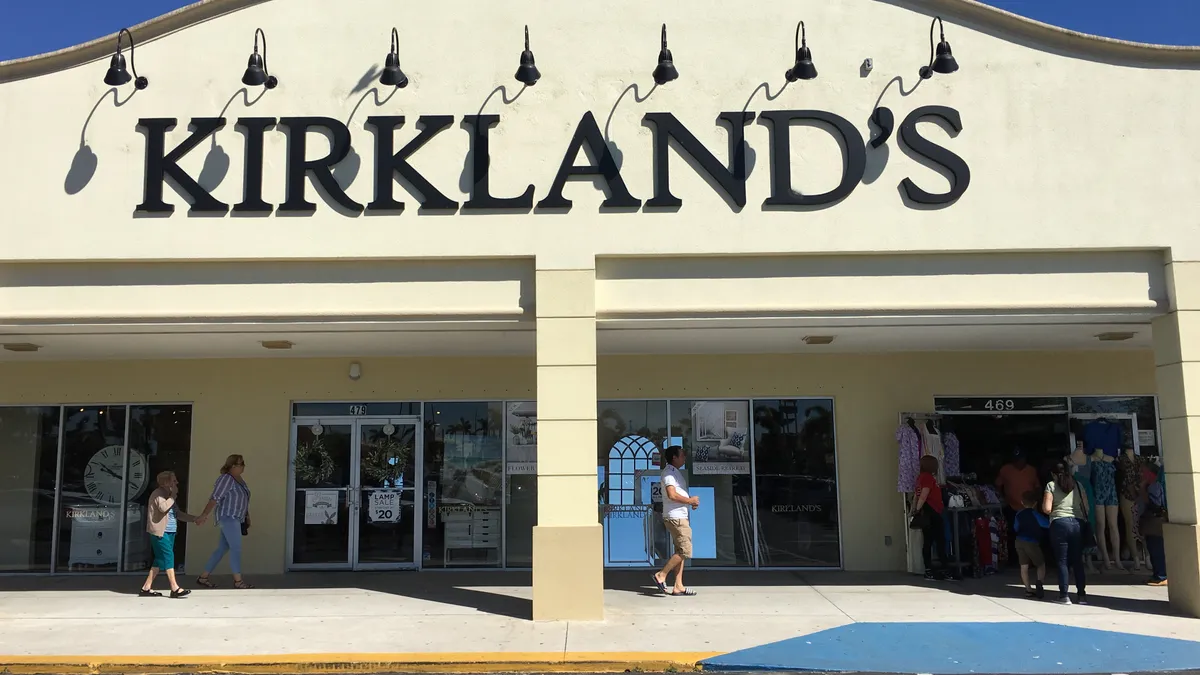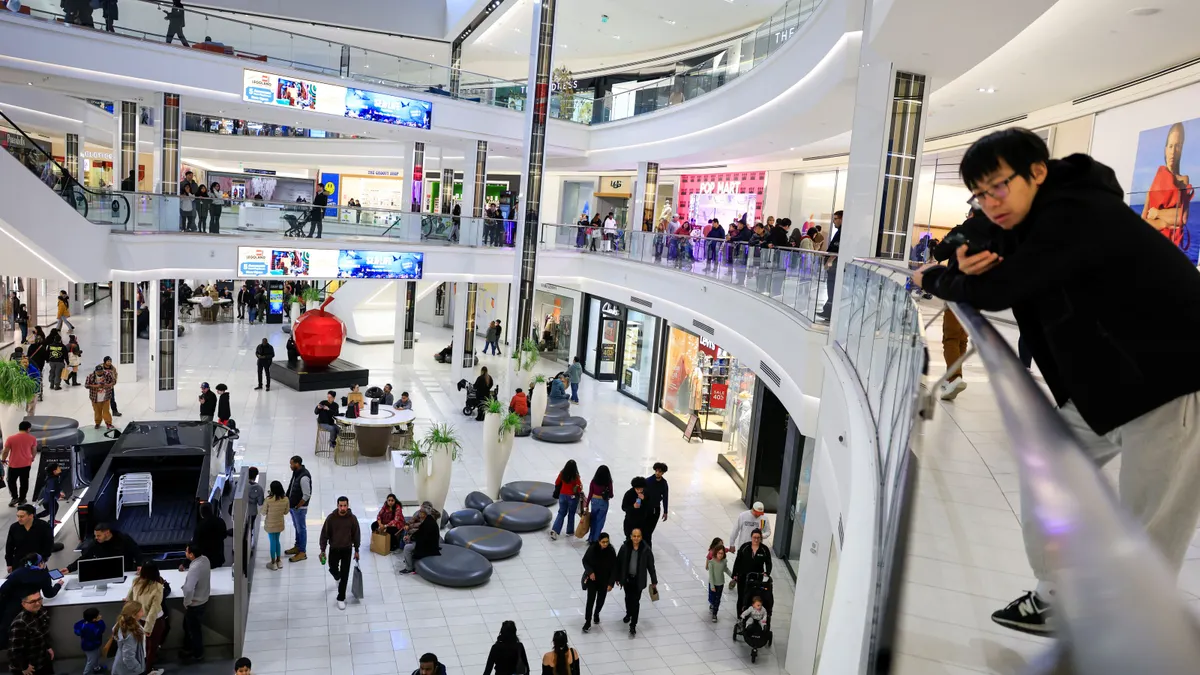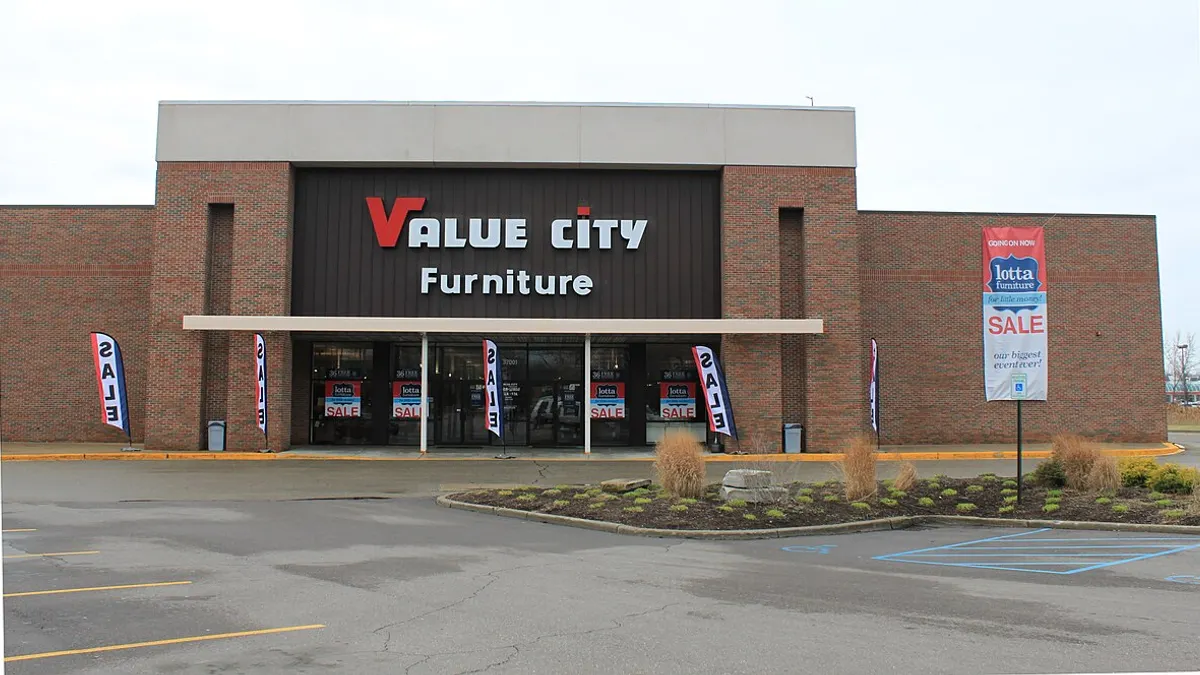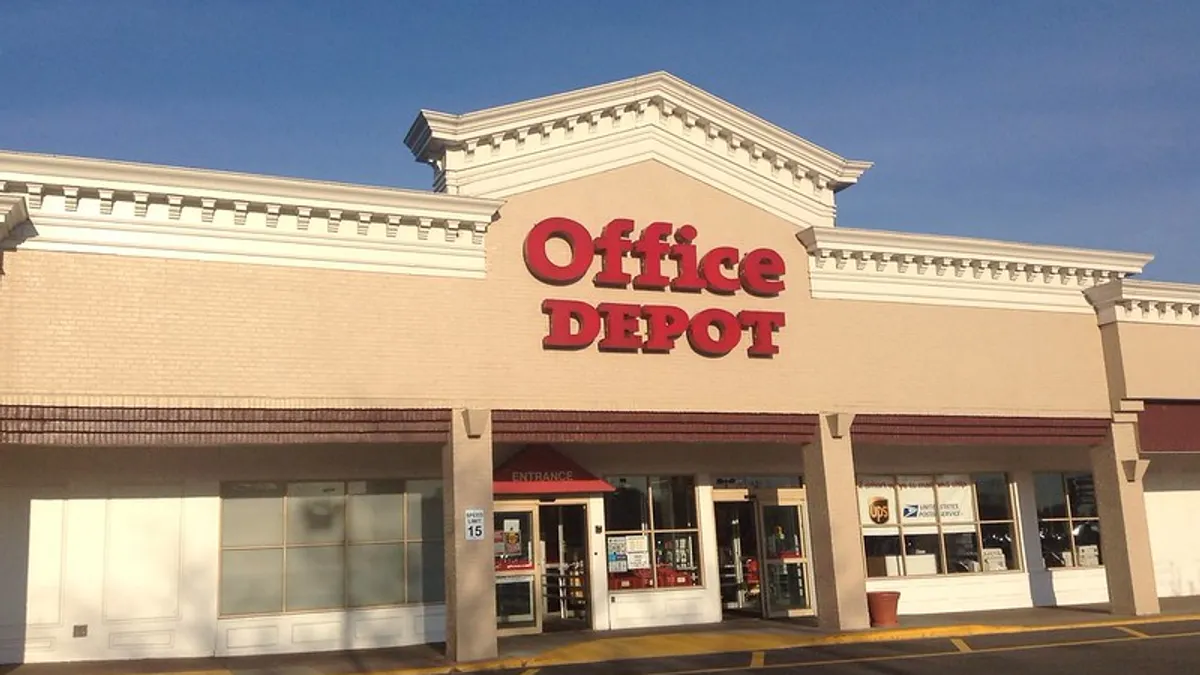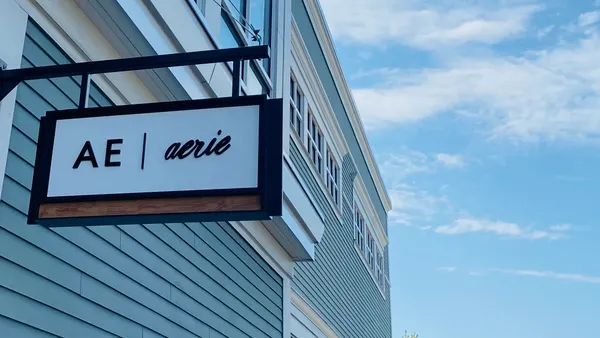The $1.9 trillion relief package passed and signed by President Joe Biden earlier this month had several components that will help determine the industry's course at least in the short term. One thing it did not contain was a provision to raise the federal minimum wage.
The Senate's parliamentarian, on procedural grounds, moved to block a hike of the minimum to $15 an hour, a number that activists and progressives have set their sights on as a potential change-maker in reducing poverty among working people. Passing an increase will be more difficult now, but don't expect the push to go away. A minimum wage increase is a stated priority for Biden and many Democrats.
Neither the National Retail Federation (NRF) nor the Retail Industry Leaders Association (RILA) issued press releases or policy papers around the proposal for a $15 minimum wage while the Democrat-led Senate was working on its version of the stimulus.
"A large number of our members probably would support raising the wage, but I can't be specific on what the appropriate level of a wage increase would be," David French, senior vice president of government relations at NRF, said in an interview. "And there are regional considerations as well … that would affect how we evaluate any minimum wage increase."
The relative quiet from the industry may be an indication of how high wages have risen at some of the retail's biggest names. It stands in contrast with years past as well. In 2014, when then-President Obama raised the minimum wage for workers on federal contracts and called on Congress to raise the minimum to $10.10 an hour, NRF CEO Matt Shay issued a scathing letter.
"A large number of our members probably would support raising the wage, but I can't be specific on what the appropriate level of a wage increase would be."

David French
Senior Vice President of Government Relations, NRF
Since then, costs of living have risen, and wages have gone up at many retailers and in many cities. The number of cities and counties with a $15 minimum hit 27 this year, according to one analysis. Meanwhile, the federal minimum, $7.25, has stayed the same.
"Minimum wage hasn't been able to follow the cost of living," said Kaede Montooth, who currently makes $11 an hour working at Petsmart, and supplements it with another part-time job and gig work with Instacart. "Thousands upon thousands of people including myself just live paycheck to paycheck. Every ounce of money I get automatically goes towards the bills that I have to pay."
Montooth, who is advocating for higher wages and hazard pay with the retail worker group United for Respect, said a higher wage would allow them to save for emergencies, re-enroll in college, get long-delayed work on wisdom teeth, and reduce work hours (from 40-50 hours per week now across Montooth's three jobs).
Nationwide, nearly 30% of retail workers would be directly affected by an increase to $15, and another 8.5% would be indirectly affected, according to an analysis by the Economic Policy Institute in 2019. That was a year when the House of Representatives passed a bill that would have lifted the wage to that target, but with a Republican Senate and administration, the bill went nowhere.
There's nothing magic about that precise $15 figure other than it more than doubles the current minimum hourly wage of $7.25 and has been a rallying cry in the "Fight for $15" movement that has succeeded in several states and municipalities around the U.S.
Beyond sheer numerical and symbolic weight, researchers have found a $15 minimum could have broad social impact. The nonpartisan Congressional Budget Office estimated that a $15 minimum would lift nearly 1 million people out of poverty.
Higher minimum wages could also have a positive impact on mental health, potentially by their ability to reduce poverty. Researchers with Emory University have linked higher minimum wages to reductions in suicides, with a $1 increase in wage corresponding to a 3.4%-5.9% decrease in the suicide rate. Other researchers have also tied higher minimum wages to lower suicide rates.
In a New York Times op-ed, University of California, Berkeley professors suggested that increasing the minimum wage could "reduce the persistent earnings divide between white workers and Black, Hispanic and Native American workers."
Analysis from the center-left Center for American Progress found that nearly 14.8 million children live in households where a worker makes less than $15 an hour and notes that low-wage workers are "disproportionately women and people of color, with women of color particularly overrepresented in these jobs."
Beyond academia, there is broad public support for a wage increase. Some two-thirds of Americans support a $15 minimum.
Higher prices, higher costs, higher productivity
Some of the industry's largest players have already moved to raise their starting wages to $15, including Target, Costco and Amazon.
Target raised its starting wage last year to $15. This March, COO John Mulligan told analysts the expanded wage, along with more hours, has led to a drop in turnover and increased customer satisfaction. "It's a strong testament to what can be done when we empower our teams to use their skills and passions to serve our guests," Mulligan said, according to a Seeking Alpha transcript.
Looking at the potential impacts of a federal $15 minimum, Berkeley researchers wrote that it could have positive effects for businesses, including increased labor from workers, cost savings from reduced turnover, productivity gains and increased demand for goods and services from low-wage workers after getting a raise. A paper from June found that workers at a major (unnamed) retailer became more productive and were fired less when their wages rose above the minimum wage.
"People would have more incentive to give their hardest, and be there and do their best with a job that pays them properly."

Kaede Montooth
Petsmart Employee and Activist with United for Respect
"People would work better, people would have more incentive to go in and pick up more shifts," Montooth said of a minimum wage increase. "People would have more incentive to give their hardest, and be there and do their best with a job that pays them properly. Companies have the money to be able to do it."
Analysts with Morgan Stanley found that department stores, along with restaurants and food retailers, would face the steepest increases in operating costs from a minimum wage increase. For that group, a federal minimum of $11 could reduce operating profits by 3%-10%.
For most retail businesses the analysts cover, though, wages make up a smaller part of their operating costs or are already above $11 for the most part. A minimum increase at that level would only hit 5% of companies' operating profits and would likely be made up with price increases, the analysts wrote.
An increase would, of course, raise costs for retailers. Morgan Stanley focused much of their recent report on a hike to $11, based on the assumption Democrats would not likely be able to push for a $15 minimum until after the 2020 midterm elections. Looking at the possibility of a $15 minimum, though, they estimated such a spike would raise labor costs nearly 18% for general merchandise stores and by more than 10% for specialty stores, apparel retailers and department stores.
But for many of those sectors, labor is a smaller share of their operating costs. In apparel retail, a $15 minimum wage would touch about 15% of a company's operating profit. That figure is less than 10% for general merchandise stores, home furnishing retail, specialty stores and home improvement retail, according to Morgan Stanley's analysis.
Disparities are starker when looking at individual companies. At off-pricer Ross Stores, for example, a $15 minimum wage would only lead to a 6.1% hit to operating profit. At Home Depot, it's just over 4%. At Kohl's and Macy's, on the other hand, the profit decrease is larger than 25%. (For all of those companies, the profit decline from an $11 minimum wage is less than 5%.)
One way to recoup those costs is by raising prices. "Current research says there will be price increases associated with moving to a higher minimum wage," Dale Belman, a professor with Michigan State University and co-author of an academic book on minimum wage effects, said in an interview. "That seems to be where most of the action goes. So the price of a quarter pounder combo goes up 25 to 50 cents. And that enables the restaurant to keep its staff on."
Some companies have become more efficient to account for higher wages. Costco CFO Richard Galanti, when asked by an analyst how his company might offset its announced wage increases to $16 an hour, said, "I used to think about that question 30 years ago."
In the past, Costco's employees — among the best paid on the front lines of retail — have come up with their own ideas for making their labor more productive. Galanti said, according to a Seeking Alpha transcript, that the company over the years ultimately decided to "pass it on and we'll get there from an efficiency standpoint. And it seems to have worked for us."
An increase may hit weaker companies harder. "What happens in retail or small firms is that those that are operating efficiently ... come up with ways of adjusting to that higher wage," Belman said. "The firm's that are driven out, understandably, are those that are fairly marginal, the type that are barely making their operating costs on a weekly or a monthly basis."
'Absence of agreement'
Over the course of nearly a century of minimum wage debates and laws, the specter of lost jobs has often framed the discourse. Industries, including retail, have pushed back on hikes both recently and historically with concerns about job losses.
After the first minimum wage law passed during the Great Depression, then-President Franklin Delano Roosevelt mocked any would-be "calamity-howling executive … who has been turning his employees over to the Government relief rolls in order to preserve his company's undistributed reserves" and who may challenge a then-$11-per-week wage on the basis that it would "have a disastrous effect on all American industry."
Since then, scores of minimum wage laws have passed at federal, state and city levels — often with opposition from business lobbies — and economists have amassed decades worth of statistics to determine the exact impact minimum wage has on employment levels and other factors. One might think the actual impact on jobs would be a settled matter by now.
Not quite. Disparate camps of economists still confidently assert, respectively, that there is little to no effect on jobs from minimum wage hikes or that there is indeed a measurable impact.
Writing in January for the National Bureau of Economic Research, David Neumark, an economics professor at University of California, Irvine, described as "puzzling" the "absence of agreement on what the research literature says — that is, how economists even summarize the body of evidence on the employment effects of minimum wages."
Neumark and a co-author found, after reviewing the body of research on minimum wage and jobs, that "there is a clear preponderance" of estimates showing job losses with minimum wage increases, especially among younger and low-skilled workers. Neumark also notes that "the evidence is not unambiguous," with some studies showing no impact on jobs or even increased employment levels.
"In point of fact, the minimum wage did pretty much what it was supposed to do."

Dale Belman
Professor, Michigan State University
In another recent paper, Alan Manning, a professor with the London School of Economics, described the minimum wage's effect on employment as "elusive." Looking broadly at past studies and data, Manning wrote that "one has to acknowledge that the impact of the minimum wage on employment is theoretically ambiguous." This could be due to consistent demand for labor despite higher wages, heightened productivity and lower turnover after increased wages, labor market frictions, among other factors.
Manning, however, acknowledged "there is some level of the minimum wage at which employment will decline significantly" and suggested researchers should refocus around that figure.
In its analysis, the CBO estimated that a $15 wage hike could result in 1.4 million lost jobs. But even some economists who have linked minimum wage increases to job losses think that number may be too high.
"I don't know where CBO got that number," Belman said, noting that his own and other recent findings on the negative minimum wage impact on jobs were at much more modest rates than what the Congressional Budget Office estimated. Belman also noted that employment levels tend to rise back up a few years after a minimum is instituted.
"In point of fact, the minimum wage did pretty much what it was supposed to do," Belman said of the policy's effects over time. "It raises the wages of lower income workers to improve working conditions with relatively small employment effects."







